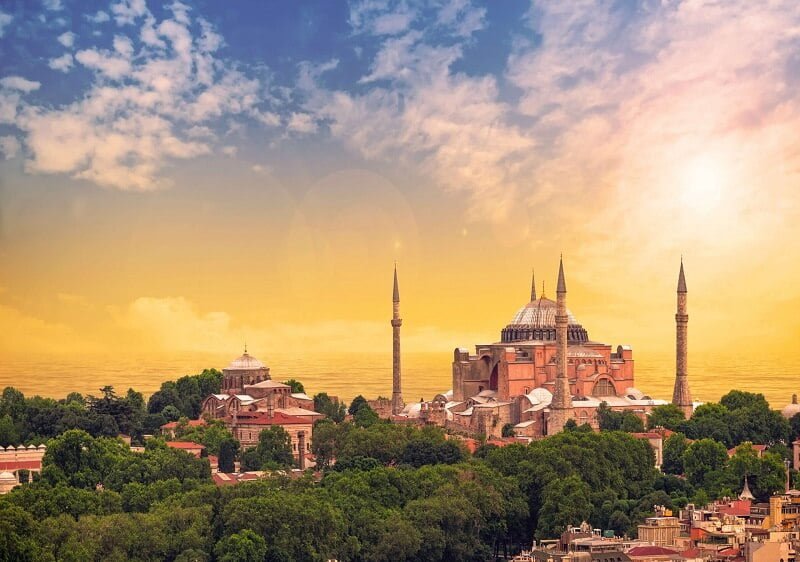
Hagia Sophia was built by the Roman emperor Justinian in 532-537. The present Hagia Sophia is the third of that name to stand upon this site. The first Hagia Sophia was built in 360 during the reign of Constantius, who was the son of Constantine the Great. The church was destroyed by fire in 404, during a riot by mobs protesting Patriarch Chrysostom’s exile by the Empress Eudoxia. The second church of Hagia Sophia was completed in 415and was dedicated by Theodosius on 10 October. The second Hagia Sophia eventually suffered the same fate as its predecessor, the fort was burned down during the Nika Revolt in 532.
The chronicler Procopius, telling the destruction of Hagia Sophia in the Nika Revolt, observed that “God allowed the mob to commit this sacrilege, knowing how great the beauty of this church would be restored.” Procopius tells us that Justinian immediately set out to rebuild the church on an even grander scale than before. The Emperor built regardless of expense, gathering together skilled workers from all over the empire. Justinian hired the architect Anthemius of Tralles, one of the most distinguished mathematicians and physicists of the age. His assistant was named Isidorus of Miletus, the greatest geometer of late antiquity. Hagia Sophia was completed in 537 and was formally dedicated by Justinian on 26 December of that year, Saint Stephen’s Day. When earthquakes caused the dome’s collapse, crushing beneath the debris the altar with its ciborium and the ambo. Justinian set out to rebuild the dome and hired Isidorus the Younger, the nephew of Isidorus of Miletus. Isidorus’s principal change was to make the dome somewhat higher than before, thereby lessening its outward thrust. Isidorus’s solution for the dome has, on the whole, been a great success, for it has survived, despite two later partial collapses, until our own day.
Although Hagia Sophia has been restored several times during the Byzantine and Ottoman periods, the present edifice is essentially that of Justinian’s reign. The only major structural additions are the huge and unsightly buttresses that support the building to North and South. Originally erected by Emperor Andronicus II Palaeologus in 1317, when the Hagia Sophia seemed in imminent danger of collapse, they were restored and strengthened by the Ottomans. The four minarets at the corners of the building were built in different times by the Ottomans, during Mehmet II, Beyazid II, Murat III. The last extensive renovations were commissioned by Sultan Abdul Mecit and carried out by the Swiss architects, brothers Fossati in 19C.
Hagia Sophia, which means The Holy Wisdom. When the construction was completed, it became the largest and the biggest cathedral on earth. The dome is 57 meters and 32 diameters. There are 107 columns with different marbles, mosaics of Jesus Crist, the Virgin Mary, John the Baptist, and many Roman emperors, empresses. When the Ottomans conquered Constantinapolis, Hagia Sophia was converted into an Ottoman Imperial Mosque by Sultan Mehmed in 1453.
The mosaics were plastered but never damaged. Hagia Sophia was converted into a museum by Kemal Atatürk in 1935. In 2020, with the cabinet’s decision, the statue of Hagia Sophia had been changed and had become a mosque once again. Like the other mosques in Turkey, everyone is allowed to visit Hagia Sophia.